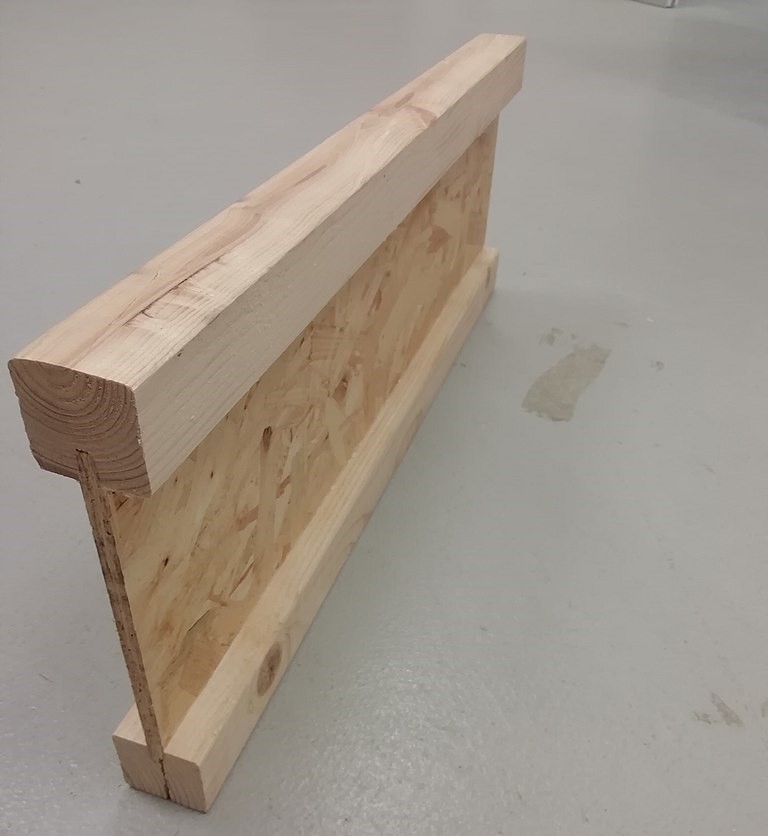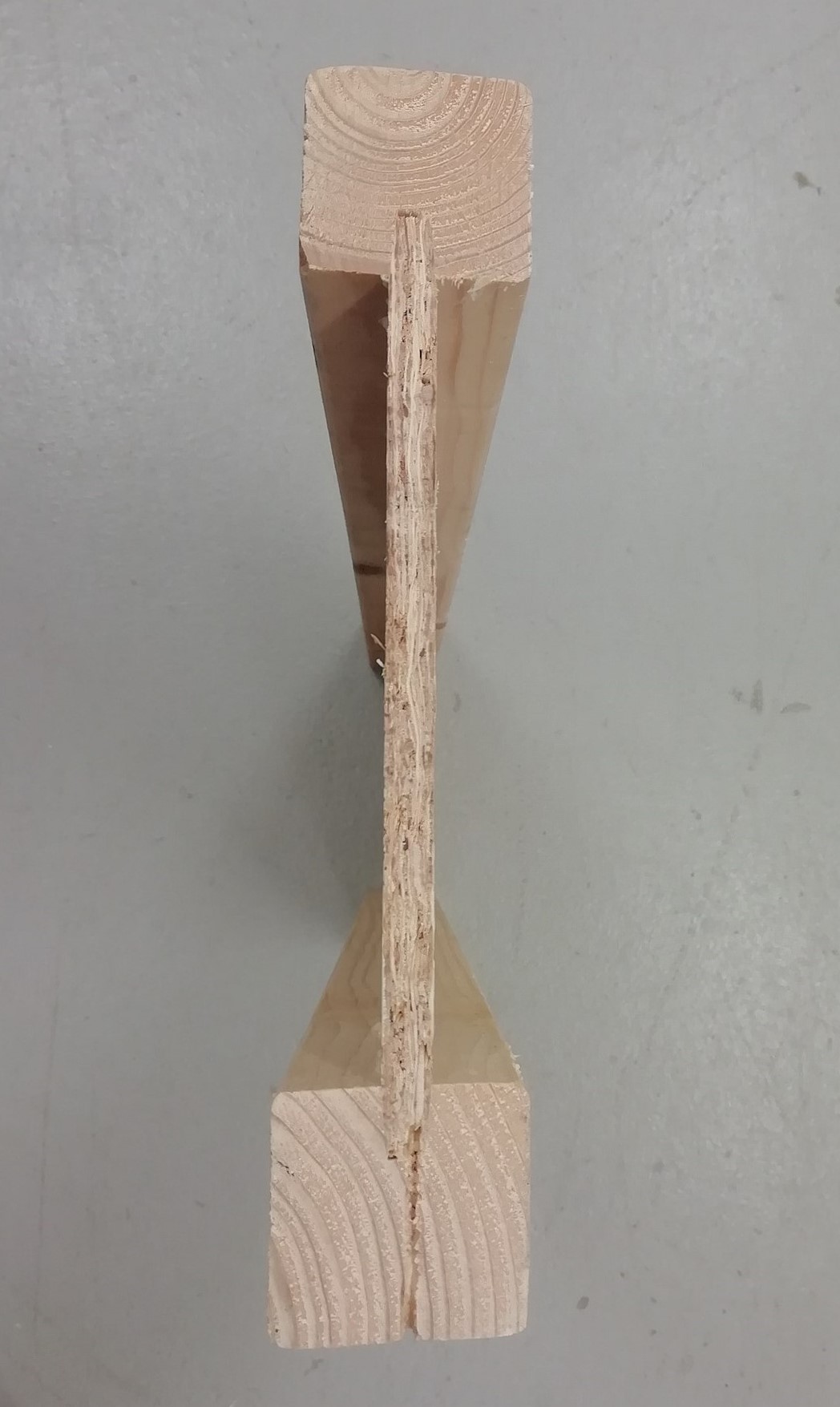Thin webbed joists

|
| This thin webbed joist was made from strength graded timber and oriented strand boards (OSBs). |
Contents |
[edit] Introduction
Engineered wood products and an introduction to timber structural systems, published by the Structural Timber Association, defines a thin webbed joist as: ‘an engineered wood product (EWP) manufactured with flanges made from softwood or laminated veneer lumber (LVL) with glued, thin webs generally made from oriented strand boards (OSBs), fibreboard or plywood. Thin webbed joists can be used to resist either flexural or axial loads or a combination of both.’
[edit] Characteristics
Thin webbed joists are also known as I-joists (or I joists) due to the “I” shape of their cross section.

|
| This cross section illustrates the "I" shape associated with the name, I-joist. |
I-joists are relatively light and have significant strength in relation to their size. They are also generally believed to be easier to handle and are less likely than equivalent solid timber sections to become misshapen or to split.
The Code of Practice for Engineered Wood Products published by the Engineered Wood Products Committee of the UK Timber Frame Association, states that I-joists “are made using a continuous process in lengths up to 20m and are cut to the desired length either in a factory prior to delivery or on site. The flanges have a pre-formed rout into which the bevelled web section is glued using an adhesive that has been approved for structural purposes (meaning they should either comply with Type I specification as defined in BS EN 301 or should be an equivalent strength and durability as verified by independent third party assessment and certification).’
Service runs for mechanical and electrical infrastructure can sometimes be installed in conjuntion with I-joists and can help reduce the likelihood of squeaky floors.
They can be used with several applications, including:
- Floor and roof joists (however, open web joists also known as metal web joists are sometimes preferred over thin webbed joists for these applications).
- Formwork.
- Ceilings.
- Loadbearing studs.
- Cladding support.
- Prefabricated cassette floors.
[edit] Related articles on Designing Buildings
- Engineered wood rim board.
- Joist.
- Metal web joists.
- Timber post and beam construction.
- Timber engineered structural frames.
- Types of flooring.
[edit] External resources
- Engineered Wood Products Committee, UK Timber Frame Association, The Code of Practice for Engineered Wood Products.
- Structural Timber Association, Engineered wood products and an introduction to timber structural systems.
Featured articles and news
The UK's Modern Industrial Strategy: A 10 year plan
Previous consultation criticism, current key elements and general support with some persisting reservations.
Building Safety Regulator reforms
New roles, new staff and a new fast track service pave the way for a single construction regulator.
Architectural Technologist CPDs and Communications
CIAT CPD… and how you can do it!
Cooling centres and cool spaces
Managing extreme heat in cities by directing the public to places for heat stress relief and water sources.
Winter gardens: A brief history and warm variations
Extending the season with glass in different forms and terms.
Restoring Great Yarmouth's Winter Gardens
Transforming one of the least sustainable constructions imaginable.
Construction Skills Mission Board launch sector drive
Newly formed government and industry collaboration set strategy for recruiting an additional 100,000 construction workers a year.
New Architects Code comes into effect in September 2025
ARB Architects Code of Conduct and Practice available with ongoing consultation regarding guidance.
Welsh Skills Body (Medr) launches ambitious plan
The new skills body brings together funding and regulation of tertiary education and research for the devolved nation.
Paul Gandy FCIOB announced as next CIOB President
Former Tilbury Douglas CEO takes helm.
UK Infrastructure: A 10 Year Strategy. In brief with reactions
With the National Infrastructure and Service Transformation Authority (NISTA).
Ebenezer Howard: inventor of the garden city. Book review.
The Grenfell Tower fire, eight years on
A time to pause and reflect as Dubai tower block fire reported just before anniversary.
Airtightness Topic Guide BSRIA TG 27/2025
Explaining the basics of airtightness, what it is, why it's important, when it's required and how it's carried out.
Construction contract awards hit lowest point of 2025
Plummeting for second consecutive month, intensifying concerns for housing and infrastructure goals.
Understanding Mental Health in the Built Environment 2025
Examining the state of mental health in construction, shedding light on levels of stress, anxiety and depression.





















